2024-12-06 22:08:59|Myriagame |source:minecraft skins
Foreword
The importance of command is self -evident in Minecraft.However, some of the tutorials on the Internet have such a situation: the veterans just look at a sense of inspiration, and novices directly copy but learned nothing.So I have two and a half years of order to learn and practice and do this tutorial.
This tutorial is specially created for my world Java version 1.21. The previous orders and professional terms may be different. Historically issues are also available to Minecraft Wiki to check.
The command tutorial is only applicable to the Java version. The Kyry Rock version and the Java version are different at the command level. Please pay attention to identification.
Some command grammar format
(): It means that there is an optional parameter part in the command to modify the command or standardize
<>: Indicates the parameter part that must be owned
|: See choice, select one parameter next to this segmentation line.
example:
/execute
It means that the parameters behind Execute can be selected in parameters such as AS, Storage, in, AT. Here are too many parameters, so it is omitted. In the future, all the content will be listed when the/execute command.
Mengxin -level command
These commands are suitable for players who have just exposed to orders, because they are very brainless and do not need any calculations and logic skills.
/seed
Function: Inquiry the seeds of the current world will always be successful (unless the authority is not enough).
You can use it without cheating in a single game.On multiplayer games, the level 2 administrator authority is required to prevent others from obtaining the seeds of the world. Using the kind of website like Chunkbase to destroy the game experience.
grammar:
/set
After this command is successfully executed, it returns the current seed in the chat bar. At this time, you can copy it to the cutting plate.
/defaultGamemode
Role: Modify the default game mode.
Many players should have been in contact with/Gamemode (this command is placed behind because of the target selectioner), but it can only change its own game mode.If a new player is here at this time, he is still the first time when he created the world.And this command can solve this problem well.
The command requires the rights of level 2 administrators, that is, the command cannot be used without cheating.
grammar
/defaultGamemode
parameter:
Game mode: Must -fill, you can fill in the following 4 types:
Survival (survival mode)
Creative (creative mode)
Adventure (adventure mode)
spectator (on -site)
Among them: Since the extreme mode is based on archives, it cannot be modified.
However, I do n’t recommend using this command to change the game mode. Compared with the command, using the debug shortcut F3+F4 can quickly change the game mode (required cheating or administrator permissions).
/me
Role: Send a message about yourself
So why don't I send messages directly?/Tell also has other functions (don't let others know) ... This command is really pic, and even Wiki does not record its appearance time.
grammar:
/me
parameter:
Output information: It must be a text (string) as the content displayed as the output.
/List
Role: Show the list of online players.(Tab: Then I'll go?)
Maybe develop it just to better view the UUID of all players.
grammar
/list (uuids)
If there is no UUIDS parameter, it will only return to the current online player.After joining, you can also display the player's UUID.But does anyone really use UUID?(Refers to survival usual)
/setworldspawn
Role: For setting up the world ’s birth point, new players will be reborn here, and the birth point block will be reloaded.
This command has the role of standardized players' birth points for some map players, but it is not recommended to set up rebirth points.If you want to change the rebirth point, please use the/spawnpoint command (this will be mentioned later)
grammar:
/Setworldspawn (coordinates) (rotating direction)
parameter:
Coordinates: It is a three-dimensional coordinate composed of an X Y Z. Among them, the X axis and the Z axis can only be between -30 million to 30 million, and the Y axis must be within the 0 to 256 range.You can use the wave number to indicate absolute coordinates, and you cannot use a drag character to represent the opposite coordinates.If you do not fill it, the coordinates of the execution position are silent.Rotating direction: It is a dual -precision floating point number (in fact, it is a decimal), which represents the shift direction of the perspective when the player generates.The direction table is as follows:
If the direction is not filled in, the current direction is default.
/time and time unit
This order should have some understanding, and its role is very simple, that is, query time and modification time.
Because the command can modify the time, the administrator authority is required.
grammar:
/timetime | time type>
parameter:
Different choices correspond to different functions:
/Time set Set to the corresponding time/Time add the corresponding time, not the negative number/time query query time
Time: To increase or set the time, you can set up a unit after 1.14.
Time unit is divided into 3 types:
Tick (TICK) T seconds (Second) S Tian (Day) D
1 game carving = 0.05 seconds
1 Units without minutes in the game, please do not write the time unit M or min.
1 day = 24000 engraving = 1200 seconds
Among them: engraving (T) is the unit used in each operation in the game, and the operation is performed every 1Tick game.The units used in Minecraft are basically ticks.
Time Type: Different commands Select different types to choose from:
ADD should not use set to choose day, noon (noon), night (after the sun), Midnight (midnight) Query must be Daytime (game day time, unit: tick), gametime: tick), day (total number of days of game days, unit: day)
The time value is converted to an integer between 0 and 2,147,483,647, such as 0.5D.
example:
/time add 3D
Set the time to 3 days.
/time set 3
The setting time is 3 times.
Note: The game date starts from the 0th day, that is, if you enter/query day when you first created the world, it shows the 0th day.Ojang is like this
/Gamerule and game rules
When creating the world, we will find a "game rule" button that can adjust the game mechanism.But after the creation, is it unable to adjust?
No, the root game mode is the same, players can also use commands to challenge the game rules of the current time.
The use of this command requires the right of the secondary administrator.
grammar:
/Gamerule(value to be modified)
parameter:
The game rules here can be queried on the related page of Wikipedia Game rules.Because there are too many rules of the game, I will not repeat it here.
The content you want to modify later can be written without writing.If the correct value is filled, it is the value that the value of the current game rules is to modify the value of the current game.
Common types of values
1. Boolean type.There are two options: True and FALSE.True said that the rules of this game were opened, and False was closed.For the most common death of death, the rules of the game: Its ID is Keepinventory, and the default is false.If we want to open it, we can use the following command:
/Gameerule Keepinventory True
2. Digital type.As the name suggests, it is a game rule with a number of numbers.Take a common random carrier: its ID is RANDOMTICKSPEED, and the default is 3.If we want to disable random engraving, we can use the following instructions to disable it:
/Gameerule RandomtickSpeed 0Precautions
Note: The "game rules ID" filled in here is not "game rules"!Commands like "/Gamerule retaining items" cannot be used!
Entry -level command
Now you have learned some of the simplest orders.But these practicality are still too small, so we need to learn further.
These commands may require a lot of memory capabilities, and they have high requirements for skilled application capabilities, and they are prone to errors, resulting in the failure of the command.
Target Seleter variable
The target selector is used to facilitate players to select creatures to execute commands.In layman's terms, it is to change the executor.
Skilled use of the target selectioner is the key to making orders, which can make different creatures affect the command.
The target selectioner is a compulsory course for commands. To do a good job, you must have enough skills of the target selectioner.
The target selector has the following variables:
@a
Choose all the players, whether life and death.
@P
Choose the player closest to the executor no matter whether it is dead.If you execute in the command block, use the command block as the executor.If it is executed in the server console, the default benchmark point is set to be the birth point of the world.
@S
Expressing the executor, regardless of life, indicates that only the only one entity is selected, but in fact, the/execute instruction can be used to represent multiple entities, which will be talked about later.
@R
Choose a random player, no matter how dead and death.
@N
Select the closest entity to the executor.
@E
Choose all the entities.
/kill
In order to help the understanding of the parameter parameter of the target selection, insert a command here.
Function: Kill (called Clear in the game) selected.
Needless to say this effect, some map authors are often used during testing.Many times, suddenly the ghost of this order is also a ghost.
grammar:
/kill (target)
parameter:
Objective: It is a player name or a target selector, which will kill the executor selected by the target selectioner, and the executed person can be multiple.
If there are no target parameters, the executor is killed by default.
example:
/kill @R
Select a lucky one randomly and stuck it.
Now you should know why the server is not allowed to command block cycle/kill @a.
Now we return to the target selector and look at the target selectioner parameter.
[Key points] Target selector parameter (part1)
It is still difficult to control the target selector variable, so the official promotes a new thing: the target selector parameter.It plays a limited role in the target selector variable.
x, y, z
Defining a position as a target selection device in the world may cause the @P executor to change (but we just want this effect).If one of the parameters is not defined, the position of the executor is used by default.
example:
/kill @p [x = 0, z = 0]
Kill the nearest players located in the X and Z coordinates.
dx, dy, dz
Select the entity in the difference between the X, Y, the Z axis based on a coordinate.It is equivalent to setting a range and interval.Execute commands in it.
example:
/kill @e [x = 0, z = 0, dx = 3, dz = 7]
Kill all players who are between 0 and 3 between the X axis and the Z axis between 0 and 7.
distance
Centered on the executor, for players who comply with a specific distance (based on the distance between the European Mind as the standard, the straight line distance in the two points) execute the command.
Distance parameters are not allowed to use negative numbers.
In the distance parameter, you can use a ingenious number to indicate the detection distance. For example, some examples:
Diatance = 2.. The command of the executor is greater than the performers.
Distance = .. 1 is the execution command with less than 1 from the executor
Distance = 1..5 distance executor distance between 1 and 5 will execute commands
The distance parameter is used to detect the position of the player. It is very useful for some maps. It can also be notified in conjunction with the original JSON text.(Maybe it's a bit super outline?)
example:
/kill @e [dist [distance = .. 5]
Kill all the entities within 5 grids of the performer, and if the executor is the entity, it will be killed because he also requires the symbol.
name
This target selector parameter can find entities with specified names as the executors of the leader.
This name can also be specified as a non -player entity. Using the fate brand can detect it by this target selectioner.This parameter fills the string, which contains the double quotes when the space is included, but it cannot be the original JSON text.
The target selectioner allows an exclamation mark in front of the number to reverse.
example:
/kill @a [name =! Notch]
Kill all players who are not notch.
Type
Limit the type of entity, so that the specified entity execute commands.
The entity type must use physical ID or physical tags (not mentioned yet).If the entity of the entity ID is MINECRAFT, it can omit the name space.Note: The physical ID or label distinguishes the case.
You can use an exclamation mark to reverse.
example:
kill @e [type =! Player]
Kill all non -player entities.
x_rotation, y_rotation
It is used to detect the position of the player's perspective, and uses qualified players as the executor.in:
X_Rotation is a vertical rotation angle, and y_rotation is a horizontal rotation angle.
The vertical rotation angle, more specifically, is the angle between the rotation height and the horizon, with the degree as the unit.The vertical rotation value increased from -90 (vertical upward) upward, then increased to 0 (level), and finally increased to 90 (vertical downward) (therefore, the vertical rotation value increased with downward rotation.Do not support anti -anti -anti -anti -anti -anti.
This selector supports the use of a omitted number circle, the grammar is the same as the distance.
The horizontal rotation angle is rotated clockwise clockwise in the south (or positive Z axis).The horizontal rotation value starts from -180 (facing the north), to -90 (facing the east), then 0 (facing Zhengnan), then 90 (facing the west), and finally 180 (again facing Zhengbei again).Why is it so anti -humans?
In the Java version, this selector also supports the scope of the use of a ruming circle.
For example:
/kill @a [x_rotation = -90, y_rotation = -180 ..- 90]
Kill all players who are facing northeast and look up.
level
It is used to detect the experience value of players, because non -player entities have no experience value, they will be ignored directly.
This target selectioner allows the use of the scope of the ellipsis circle (the same as the Distance syntax)
Please note: The level here is not experience points, so players who have just reached 100 and almost experience at level 101 are the same at @a [level = 100].
Let's take an example:
/kill @e [level = .. 1]
Kill all players with less than 1 experience.
Gamemode
Detecting the game mode, because the non -player entity does not have a game mode, it will automatically filter out the non -player entity.
The allowed parameters are as follows:
Allowing an exclamation mark to reverse.
Example (anti -countermeasure):
/kill @r [Gamemode =! Survival]
Randomly extract a lucky player. If his game mode is not a survival mode, kill it (defense is).
limit
After adding this parameter, the target selector will only choose the specified quantity target.This parameter is necessary in some commands (for example,/data instructions and/TP instructions)
When the target selectioner is@p,@r and @s, it will default to @p [limit = 1],@r [limit = 1] and @s [limit = 1].Change its Limit at this time, and you can modify the number of players selected.
Limit can choose reverse, but unlike ordinary signs, its reverse selection is the opposite number of the number of numbers.
example:
/kill @p [limit = 2]
Kill the latest two players.
/kill @p [limit = -2]
Kill the two farthest players.
sort
Specify the distance of the selection object to sort and select the corresponding entity.(Specify the priority).The optional value has the following 4 parameters:
Nearest selects the closest (@P's sorting method) FURTHER selection of the farthest Random random selection (@R's sorting method) Arbitraarth
example:
/kill @e [type = minecraft: villager, sort = further]
Kill the villagers farthest from the performer.
[Experience Analysis] Target Selection Parameter Misunderstanding
Note: Each parameter in the target selector must be matched, and the target selectioner can be executed, not one of the success!
For example:
/kill @e [type = player, type = zombie]
However, this command does not kill the players and zombies. On the contrary, it has any role, because this command has two Type parameters, but the target selectioner parameter needs to be fully satisfied to execute.In other words, it is necessary to be killed by a creature that requires both zombies and players. Without creatures, it will have this attribute. Therefore, it is impossible to execute and the system will directly report an error.If you need to kill zombies and players at the same time, at least there are at least two commands:
/kill @e [type = player]/kill @e [type = zombie]
Please note: @E [Type = Player] here cannot be changed to @a, because the former will not execute orders for players who have not resurrected death, but the latter cannot be compared with the two.
The target selector is an important part of the command. When choosing a specified entity, the target selectioner is very important.Please make sure you have read the chapter of the target selectioner, and then check the tutorials.
[Selection] The mutual conversion of the target selector
The target selector has the following variables:
@e,@a,@r,@s,@p,@n
Among them, @A generation refers to all players, which means Type = Player, so @a can also be written: @e [type = player]
However, these two still have a different point: @a can also be selected when the player's death is not resurrected, but @E [Type = Player] cannot choose a player who dies but not resurrected.This can be used to determine whether the player dies, but in fact, the author does not recommend using this method. The author also recommends using a composite scoring board to detect. The scoring board will be said in the future.
@P refers to players closest to the target, equivalent to sort = nearest and type = player.Since it only specifies one player, you need to join Limit = 1!
Therefore, the @P in the command block can also be written as @a [sort = nearest, limit = 1] or @e [type = player, sort = nearest]
Among them, @a [sort = neAREST] and @P can be directly equated, because they will all detect players who have not resurrected death, and then @e [type = player, sort = nearest] still cannot be detected due to the limitations of Type = Player.Go to players who have not resurrected.You need to pay attention!
@N will choose the recent physical execution command. It is almost the same as the effect of @P, but one is to choose the nearest player and the other is the recent entity.Similarly, because it only chooses one entity, we need to join Limit = 1!
Then, based on the experience of the above conversion, we can also convert @n to @e [sort = nearest, limit = 1] and can be equal, because neither can choose the entity in death.
Reasonable use of the characteristics of mutual conversion between the target selectioner and the Type =, you can randomly select a player to execute the command, which coincides with the effect of sort = Next.Similarly, because it only chooses one player, we need to join Limit = 1!
Then, based on the experience of the above conversion, we can also convert @R to @a [sort = random, limit = 1] and can be equal.@e [type = player, sort = random, limit = 1] Even if you can randomly select a player, you still cannot choose players who have not resurrected.In order to make your order vulnerability less and more stable.
[Difficult point] command square
The commands I mentioned above are all executed by players, but everyone who has played the map knows: No one in the map is to lose the command with you.At this time, the command block can be made up.
The command block, as a product tailor -made for command, naturally cannot be obtained in special channels.In the settings, click the control page in the settings, and see an option called "Creation Mode Item Bar". Open it to see a tab pages in the lower right corner in the lower right corner, which contains command blocks.Please note: The command block can not be destroyed, and in order to ensure the balance of the game, unless the vulnerability is used, players who are lower than 2 are less than 2.
The command block has the direction, please make sure your direction is correct when placing.
There are 3 types of command blocks:
Pulse -type command block
This type of command block is orange, which will be activated when entering the redstone signal, and it will execute its internal command once when activated.
Circular command block
This type of command block is presented as purple. When it is activated, every 1Tick executes its internal command.
(Here is a knowledge, 1 second = 20tick, tick Chinese name is game carving [Game Tick], abbreviated as T or GT)
Chain type command block
This type of command block is blue, and only when the command block is successfully executed, the internal command (deemed activation) will be performed normally.
Supplement: Don't think about using a command block to create a cycle. Each command block can only be run at most once within 1Tick.The execution of the command failed.
Condition restrictions and unlimited restrictions
In the command block interface, you can select whether the execution command of the command block can be restricted by the condition.
The default is unlimited.
When the type is unlimited, no matter whether the subsequent command block is successfully executed, the command will be executed normally, and the failure will skip.
When the type is constrained, only the command block in the rear is successfully executed, and the corresponding command will be executed normally.
There will be texture differences in arrows without restrictions and conditions
Redstone control and keep opening up
If it is controlled by redstone, there are only adjacent power sources around, adjacent charging blocks, output signals and redstone signals or red stone comparators, attached to it or the activated redstone that is pointed to it.It is only activated.
If it is kept on, it will always be maintained in the activation state (it seems that it is only valid for the circular command block?)
[Experience Analysis] The misunderstanding of the command block
Conditional constraints to detect whether it is successfully executed behind it, rather than the successful execution of the command block. If you do not know this difference, it will cause the command chain to make an error.
The command block is delayed, and the delay is 1Tick.However, there is no delay in the chain command block.But this does not mean that they are confusing. In fact, the operation of the command block also has the order.
Therefore, a pulse type command block keeps up with a large pile of chain command blocks, which can make the chain command block and pulse type command block executed within 1Tick, which is not as faster than manpower.
Even if the command block is executed in an orderly manner within 1Tick, if there is too much fork, it will still lead to confusion, but there is no problem in executing in a few command blocks.
If the type of the chain type command block is the type of constraints, it not only needs to be executed to the command block, but also requires the normal execution of the command block of the back -to -backs to be executed normally.
/tell,/msg,/w
/tell,/msg and/m are the same command. The same function is just abbreviation.
Role: Say a whisper to other players (written in the game), which means that only occurrences and recipients can be seen.
grammar:
/tell (/msg or/w) (target selection device) (content)
Among them: The target selectioner can only select the player.The content needs to be added.
When the player is using this command, the chat interface will show: XXX quietly says to you: XXX, and it is displayed as a gray oblique body.
The person who uses this command will show: you quietly say to XXX: XXX.And it shows unlimited oblique body.
example:
/m notch "you are the god of creation"
/TP and/Teleport, relative coordinates and local coordinates
/TP basically knows that people who know the order should know, but most people do not know that/TP is actually the abbreviation of/Teleport.Here, as a cold knowledge, the two commands are the same.
These two commands can be said to be particularly practical, and they can be used to transmit entities.
grammar:
/tp (or/teleport) (transmitted entity)
parameter:
Transmitted entity: As a target selector, you can choose multiple entities, and the entity that meets the conditions when executing commands will be transmitted together.
Transmission position: It can be a entity and only one (limit = 1). If the target selector is the target, you must add "Limit = 1", otherwise, even if there is only one entity matching, it will fail.After the execution is successful, all transmitted entities will reach the position of the entity.It can also be a relative coordinates and an absolute coordinates.Then people who read the parameters will ask: What is relative coordinates and local coordinates?
For example, if you want to send yourself to yourself, is it poor?Or let it tell you the coordinates, do you make another series of calculations?This is too bad.So at this time, you need relative coordinates and local coordinates.
Relative coordinates: centered on the center of the world (0, 0, 0), which is actually the coordinates we often say.Basically, the game is basically a relative coordinate.In the command, if you want to represent your relative coordinates, you can use the symbol "~" (wave number).
For example:
/tp @s ~ ~ ~ ~
If you are now (11, 64, 14), the command will automatically analyze it (equivalent to)
/tp @s 11 64 14 (TP)
Then there is a local coordinate, which is equivalent to the world's center.You are (0, 0, 0), using the symbol "^".Create the coordinate system in the front direction of the X axis.
When using relative coordinates and local coordinates, you can add numbers later. The game uses your current relative coordinates and absolute coordinates for additional operations.If you want to perform subtraction operations, you only need to fill in the negative sign later.
Here are two similar commands for example:
/tp @e [type = pig] ~ 3 ~ ~/tp @e [type = pig]^3^^
Although these two commands are very similar, the role is very different.
The first command is to extend all the pig TP to your relative coordinates. The coordinate axis specified in front of the 3 -cell, that is, if you are (11, 64, 14)(14, 64, 14).Because the relative coordinates do not exercise, how many times you execute (premise that you do not move) and they will appear in the same place.
The second command is to take all the pig TP to your perspective. Because the position you facing is the X -axis, TP to the X -axis of your local coordinate is the 3 blocks in front of you.This coordinate moves with the perspective of the player.In other words, you only need to move your perspective to change the transmission position of the entity.
Back to the topic, the/TP (Teleport) instruction has an error -prone content.If I use this command, what does it mean?
/tp @e [type = villager, limit = 1, sort = nearest]
Is it the nearest villager TP to us?(Putting the villagers as transmitted, equivalent to/tp @e [type = villager, limit = 1, sort = nearest] @s)
I don't know if you noticed the grammar side, showing that the executed person is an option, and the transmission position is a required option?There is only one two parameters here, so there is only one possibility: villagers are transmitting positions, not transmitted entities.
So in fact, this command is actually equivalent to the following command:
/tp @s @e [type = villager, limit = 1, sort = nearest]
Please check the content in this chapter repeatedly, because there are too many contents and abstract content in this chapter, it may be difficult to understand for some people with poor space.Please understand the follow -up tutorials.
ID concept
There are many squares in Minecraft.In order to manage these blocks, the official ID is officially set for each block and items, structures, etc., that is, it is a square ID, item ID, etc.
The ID follows the following format:
Naming space: the corresponding ID
First of all, let's talk about the naming space. If you think about it, if there is a module (assuming that the name is AOA10) has a copper ingot, and the original version also has a copper ingot. At this time, because they are the same items, the ID will cause conflicts.So at this time, use the name space to distinguish, who is who is the copper ingot.
Generally speaking, the original naming space is Minecraft rather than Vanilla.The naming space of the module is generally their abbreviation, or the full name of the module, or part of the module.For example, The Twilight Forest is TwilightForest, and the name of the ID is generally its English name (if there is a space, it is written as the form of the lower line), for example, MineCraft: Gold_nugget is the gold ingots in the original version.
Block status and fluid state
In Minecraft, in order to better distinguish the orientation of the block, whether it contains water and other information, the official introduces a concept: block state.
You can open the F3, and you can align the quasi -heart -to -center square. You can see its ID under the target block on the right, and then below the square state.Similarly, in the face of fluids, there is also a fluid state, but in general, the fluid state is almost not used.
For example: the grass square has a Snowy block state.When the block state is non -Snowy, that is, False, the side of the grass block is green.If it is Snowy's situation, that is, when True, the side of the grass square is white.Generally speaking, the Snowy of the grass block is FALSE.Unless there is snow above it, in order to set off the white scene, it will be True.
Similarly, the state status is not only divided into True and FALSE, but also the state of some blocks can also be numbers.For example, leaf: own the following block state.
You can see that the distribution is 1-7, and the remaining Persistent and WaterLogged use True and False.
Here we can collect True and False collectively as "Boolean values".
/fill
/Fill command is used to fill or replace the specified squares in a certain range to another block (replace A to B). For large -scale regular geometric buildings, it should be used to speed up the construction progress.
The grammar is as follows:
/fill(replacement method) (replaceable squares, you need to replace the method as DESTROY)
The game will be operated with the space between the starting coordinates and the end coordinates. Start coordinates and end coordinates can also be relative coordinates and absolute coordinates.
To replace the block, you need to fill in the box ID, which can add the block attribute.If the container can add NBT (this will be said later).
If you need to add a block attribute to the replaced block, you need to use the bracket to include the block attribute.If there are multiple block attributes, you need to add the commas directly in the two block attributes.
For example:
Minecraft: Oak_leaves [WaterLogGed = TRUE, Persistent = TRUE]
There are the following five replacement methods:
Destory: Replace the square into a specified block and the original block is deemed to be excavated by the lower alloy 锹 or lower alloy pick in the enchanting, and drop the corresponding drop.If you need scissors such as scissors, you will not fall.The same is theory of fluid.
In addition, Destroy also has additional parameters: you can add a block ID as a replaced block in the back.
Hollow: Slotting edges (filled inside) in the periphery internally, which will cause the three parts of the long length, width, and height. If any place is less than 3, it is the same as the REPLACE effect.
Keep: Only fill the air cubes.
Outline: On the outside to the inside trace (filling outside), the same, which will also cause the three parts of the long length, width, and height. If any place is less than 3, it is the same as the REPLACE effect.
Replace: Replace directly in the specified area. If the method is not specified, the default is that this will not be generated by dropped objects.
Example: All the air from (0, 0, 0) to (5, 5, 5) is replaced with all of the air.
/Fill 0 0 5 5 5 5 Minecraft: DIRT Keep
Destroy all soils between (0, 0, 0) to (5, 5, 5) and convert them into oak leaves placed by players with water -containing.
/Fill 0 0 5 5 5 Minecraft: Oak_Leaves [WaterLogGed = TRUE, Persistent = TRUE] Replace Minecraft: DIRTThe tutorial has not finished it, and it is not continued ...

National Service DNF Dark Ni
2025-01-28 09:19:27
The new screenshot of the be
2025-01-28 09:18:57
The 15th anniversary wallpap
2025-01-28 09:18:27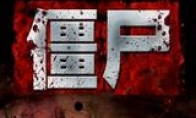
3DM Xuanyuan Sinicization Gr
2025-01-28 09:17:57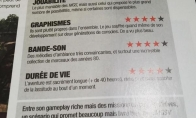
French magazine is the first
2025-01-28 09:17:27
The sneak game "Republic" wi
2025-01-28 09:16:57
The story between humans and
2025-01-28 09:16:27
Capture "Trinity 3: Artifact
2025-01-28 09:15:27
Wind direction change "Myste
2025-01-28 09:14:57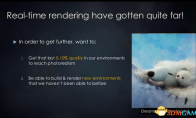
DICE's new project "Dream" w
2025-01-28 09:14:27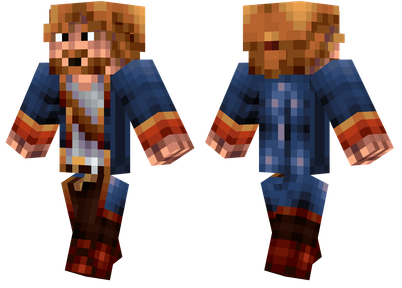
Pirate Minecraft Skins
Minecraft Skins
2024-12-10 04:11:27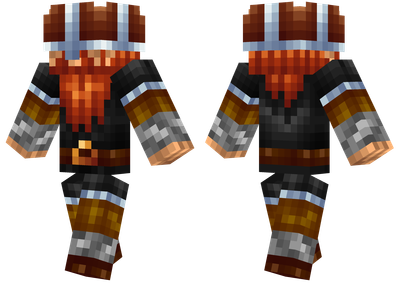
Pirate Minecraft Skins
Minecraft Skins
2024-12-10 04:11:26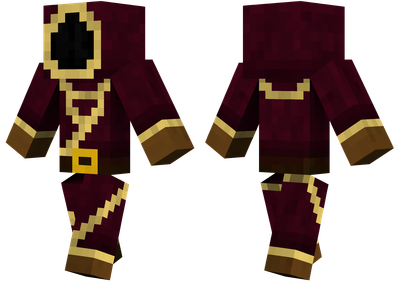
Master Minecraft Skins
Minecraft Skins
2024-12-10 04:11:25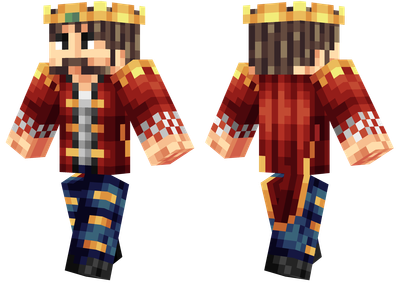
King Minecraft Skins
Minecraft Skins
2024-12-10 04:11:25
Guide Minecraft Skins
Minecraft Skins
2024-12-10 04:11:24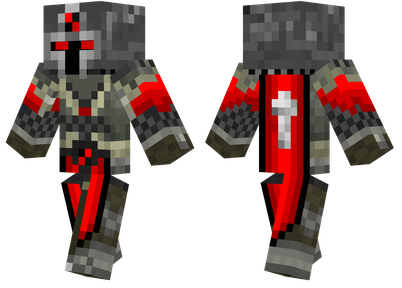
Dark Knight Minecraft Skins
Minecraft Skins
2024-12-10 04:11:23
Sparta Minecraft Skins
Minecraft Skins
2024-12-10 04:11:23
Moncraft Skins of the War
Minecraft Skins
2024-12-10 04:11:22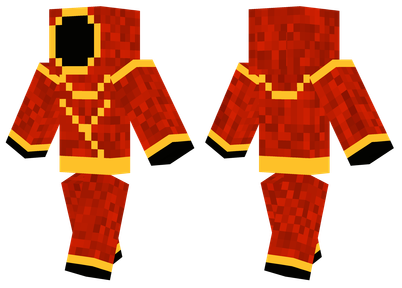
Red Witch Minecraft Skins
Minecraft Skins
2024-12-10 04:11:22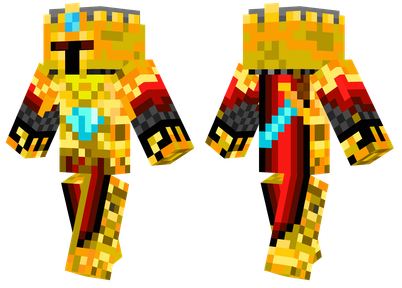
Golden Cavaliers Minecraft S
Minecraft Skins
2024-12-10 04:11:22